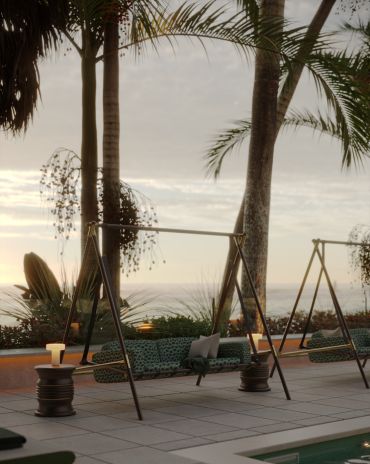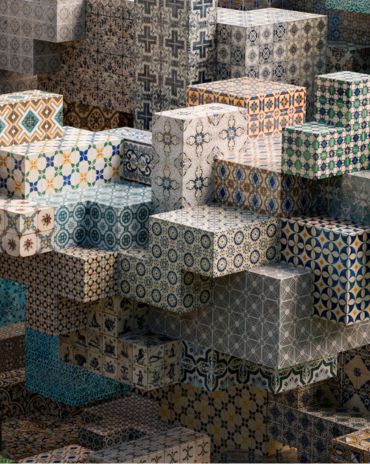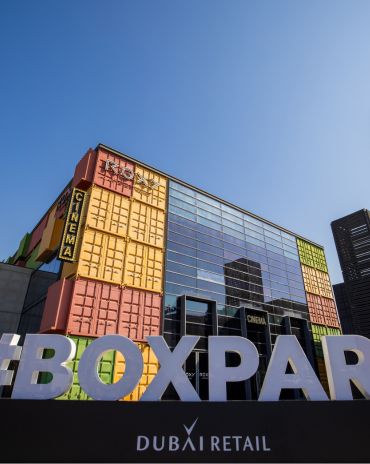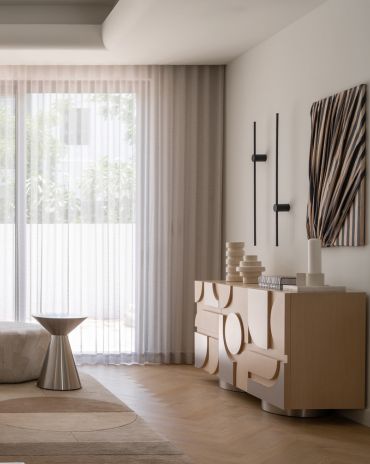Copyright © 2025 Motivate Media Group. All rights reserved.
The Louvre Abu Dhabi is welcoming visitors
Designed by Jean Nouvel, Louvre is transforming the region with its landmark status.
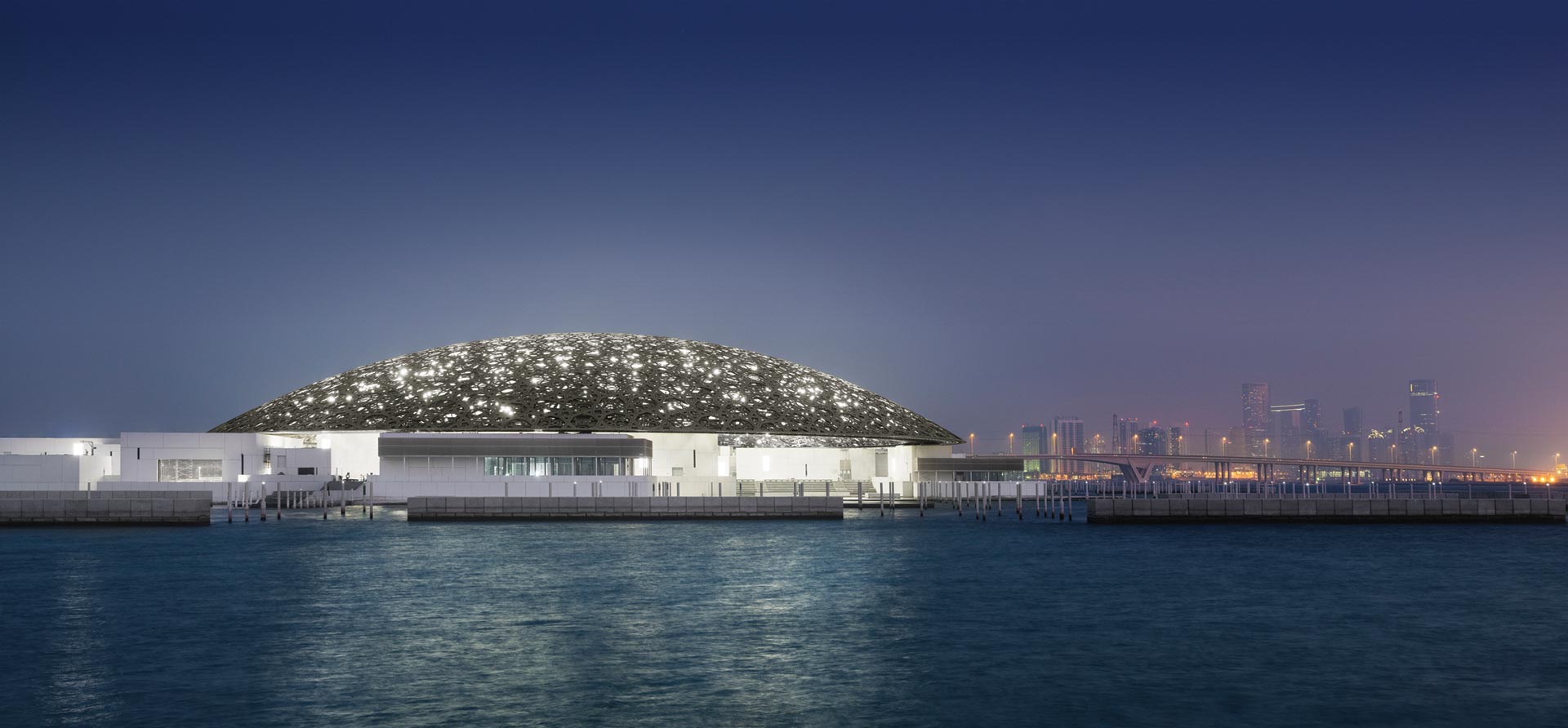
Situated on Saadiyat Island, the museum showcases artwork from around the world, with particular focus placed upon building cultural understanding.
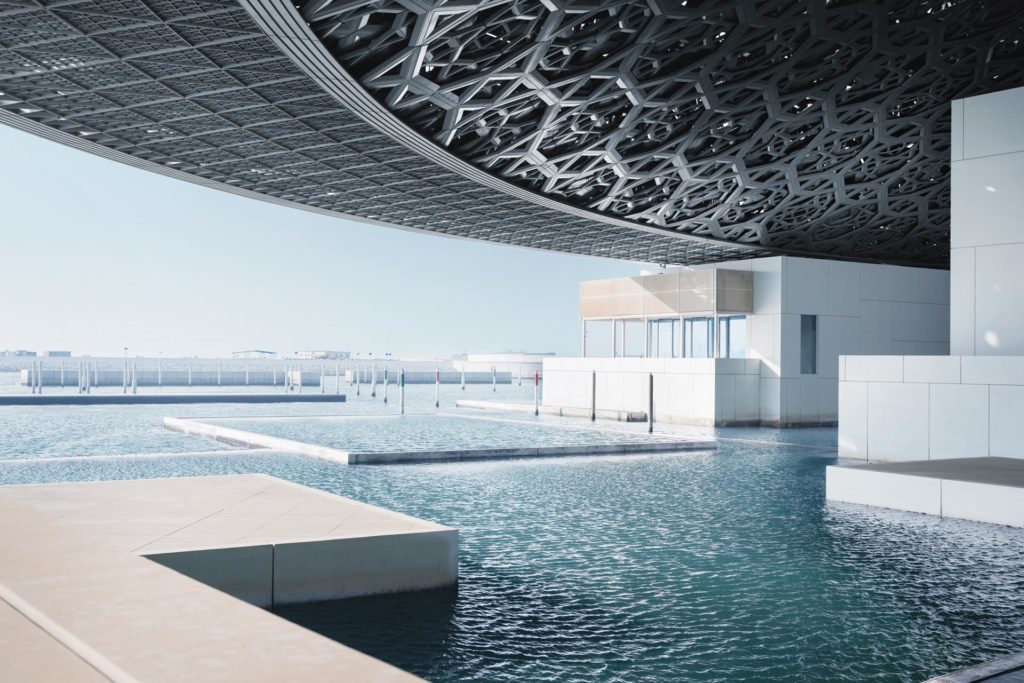
Louvre Abu Dhabi is linked to the famous Louvre in Paris by a 30-year branding and training agreement that was signed in 2007. According to the Tourism Development & Investment Company (TDIC), master developer of the museum and Saadiyat Island, “Louvre Abu Dhabi represents the dynamic nature of the contemporary Arab world, while celebrating the region’s vibrant multicultural heritage.”
It boasts a gross floor area of 97,000 m², with permanent exhibition galleries occupying 6000 m² and temporary exhibition galleries covering another 2000 m². Described by TDIC as a ‘museum-city’, the complex comprises 55 detached buildings, 23 of which are devoted to galleries.
The form of the buildings is said to be inspired by the low-lying homes of the region, with the museum itself designed as a “seemingly floating dome structure”; its web-patterned dome allows the sun to filter through, as it would through date palm fronds in an oasis.
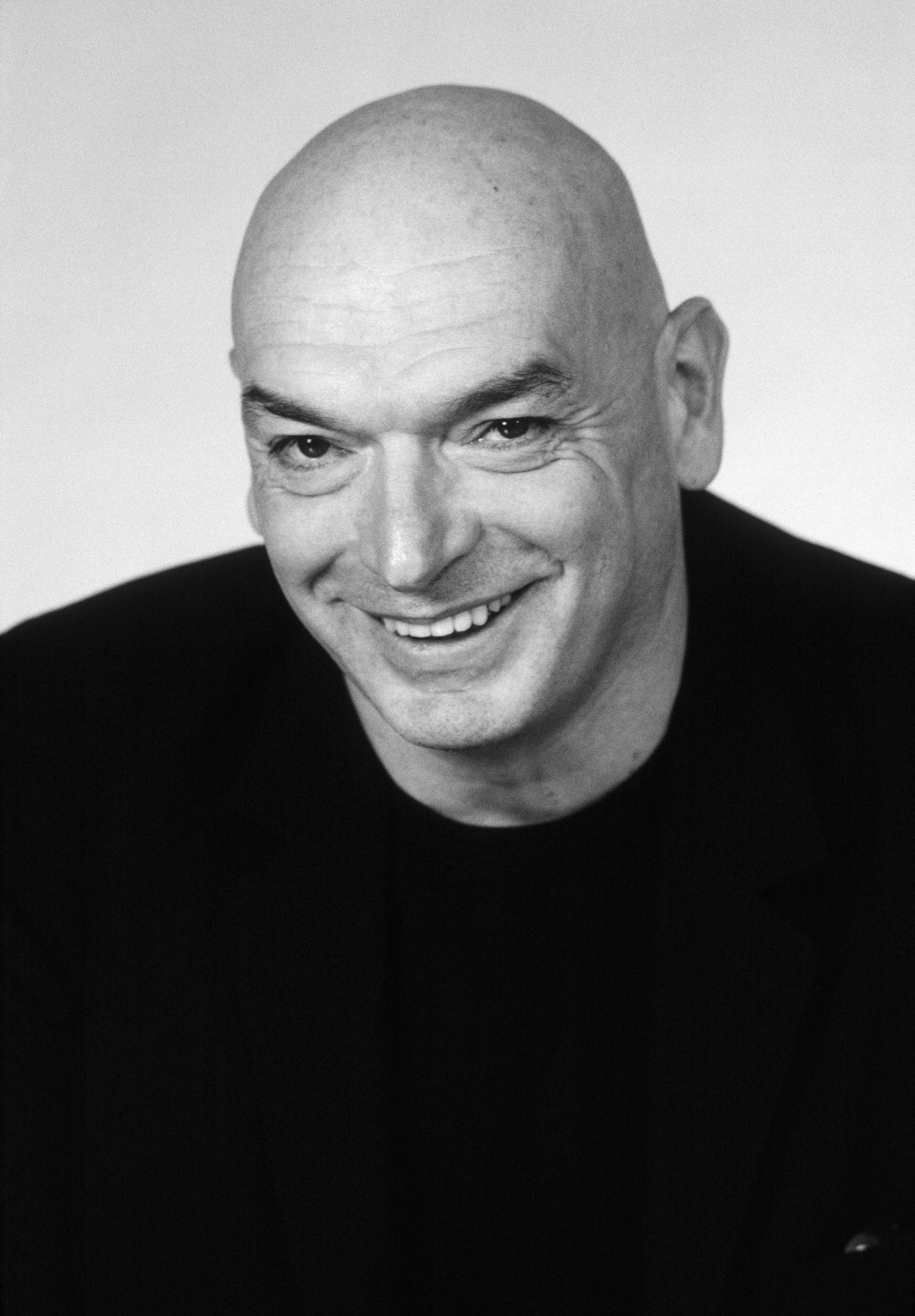
Photo: Gaston-Bergeret
The Louvre Abu Dhabi becomes the end of an urban promenade, a garden on the coast, a cool haven, shelter from the light of day and evening, its aesthetic consistent with its role as a sanctuary for the most precious works of art. – Jean Nouvel
Construction work at Louvre Abu Dhabi officially started in late May 2009, and in September 2014 the final, very large section of the dome was fitted in place – a significant milestone in the construction phase.
The enormous dome, which appears to float above the museum, weighs 7500 tonnes and is 36 metres above ground level. As well making a huge contribution to the museum’s unique form, it acts as a shading canopy, reducing the energy consumption of the building.
It’s just one of a host of measures being taken to help Louvre Abu Dhabi meet its target of achieving LEED Silver status; others include the self-shading of buildings, optimised roof perforations to allow daylight without excess solar gain or wind flow, and exposed thermal masses such as stone flooring and cladding that can benefit from night-time cooling.
The museum has already achieved a 3 Pearl Estidama Design Rating, and will create its own microclimate through culturally inspired passive-design techniques.
The architect responsible for Louvre Abu Dhabi’s unmistakable form is Jean Nouvel, one of the most celebrated and influential architects of the last 50 years.
Of his latest creation he says, “Discovering an archipelago constructed on the sea is unusual. As is the fact that it is protected by a parasol creating a shower of lights. The possibility of going ashore or of finding a pontoon to access the shore on foot is equally extraordinary, as is being welcomed there as a visitor wanting to browse unique collections, linger in tempting bookstores, or taste local teas, coffees, and delicacies.
“It is a calm and complex place. A contrast of a series of museums cultivating their differences and their authenticities. It is a project founded on a major symbol of Arab architecture: the dome. But here, with its evident shift from tradition, the dome is a modern proposal.
“A double dome 180 metres in diameter, flat, perfect radiating geometry, randomly perforated woven material, creating a shadow punctuated by bursts of sun. The dome gleams in the Abu Dhabi sunshine. At night, this protected landscape is an oasis of light under a starry dome.
The Louvre Abu Dhabi thus becomes the end of an urban promenade, a garden on the coast, a cool haven, shelter from the light of day and evening, its aesthetic consistent with its role as a sanctuary for the most precious works of art.”
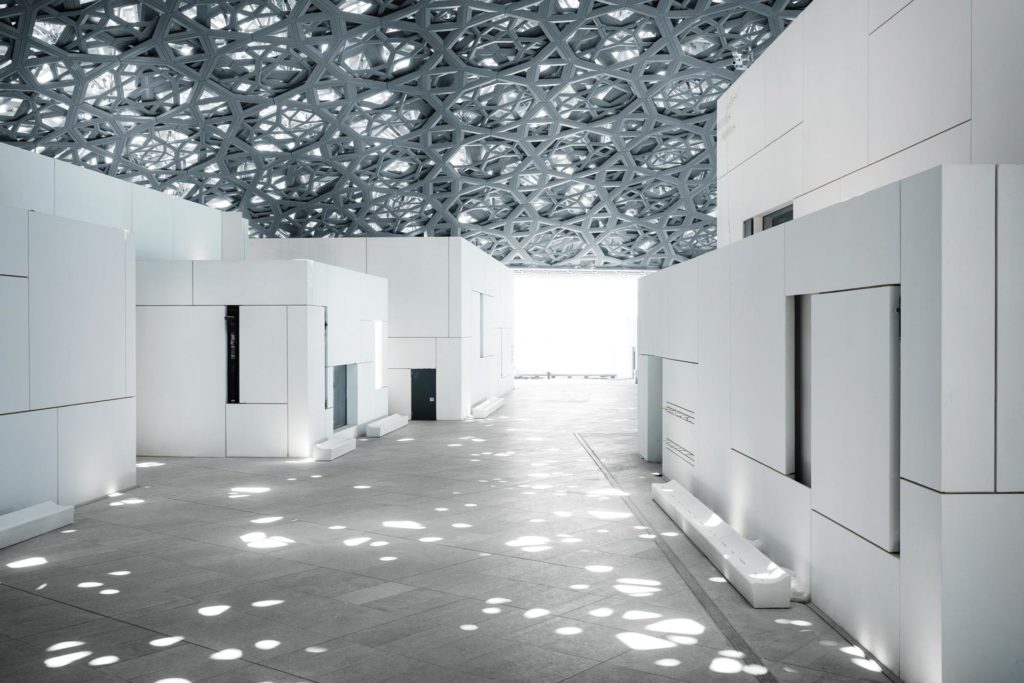
In addition to the Louvre Abu Dhabi, Nouvel’s notable works include: the Arab World Institute, Paris (1987); the Palais de Justice, Nantes, France (2000); the Guthrie Theater, Minneapolis, USA (2006); and Copenhagen Concert Hall (2009).
He has been recognised with many awards during his career, including the Aga Khan Award for Architecture in 1989 (for the Institut du Monde Arabe), the Wolf Prize in Arts in 2005 and the Pritzker Prize in 2008.
And in 2015, the identity Design Awards recognised Louvre Abu Dhabi with what we are sure will be only one of many accolades: Project of the Future. That future is now upon us.
louvreabudhabi.ae
Photographer: Mohamed Somji
The Latest
Crafting Heritage: David and Nicolas on Abu Dhabi’s Equestrian Spaces
Inside the philosophy, collaboration, and vision behind the Equestrian Library and Saddle Workshop.
Contemporary Sensibilities, Historical Context
Mario Tsai takes us behind the making of his iconic piece – the Pagoda
Nebras Aljoaib Unveils a Passage Between Light and Stone
Between raw stone and responsive light, Riyadh steps into a space shaped by memory and momentum.
Reviving Heritage
Qasr Bin Kadsa in Baljurashi, Al-Baha, Saudi Arabia will be restored and reimagined as a boutique heritage hotel
Alserkal x Design Miami: A Cultural Bridge for Collectible Design
Alserkal and Design Miami announce one of a kind collaboration.
Minotticucine Opens its First Luxury Kitchen Showroom in Dubai
The brand will showcase its novelties at the Purity showroom in Dubai
Where Design Meets Experience
Fady Friberg has created a space that unites more than 70 brands under one roof, fostering community connection while delivering an experience unlike any other
Read ‘The Winner’s Issue’ – Note from the editor
Read the December issue now.
Art Dubai 2026 – What to Expect
The unveils new sections and global collaborations under new Director Dunja Gottweis.
‘One Nation’ Brings Art to Boxpark
A vibrant tribute to Emirati creativity.
In conversation with Karine Obegi and Mauro Nastri
We caught up with Karine Obegi, CEO of OBEGI Home and Mauro Nastri, Global Export Manager of Italian brand Porada, at their collaborative stand in Downtown Design.
The Edge of Calm
This home in Dubai Hills Estate balances sculptural minimalism with everyday ease











